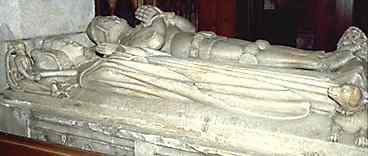Script Type : minuscule cursive
Date : 15th century
Location : England
Function : document hand



























Distinctive letters : This particular cursive charter hand is relatively formal but rather spiky. While letters such as b, d and l have looped ascenders, they tend to be angular. The trickiest letter to identify is r, which is very simplified and extends below the baseline. The letter e is very loopy and appears to be back to front. Both the tall and the short and curly forms of s are present. It can be difficult to distinguish c from t, as the former tends to be angular and the latter is short.
From the examples above it would appear that u and v are differentiated, but this is a bit of an illusion. They are identical when they appear in the body of a word, and are also identical, but with a different form, when they appear at the beginning. The form of v in the example set is identical to u in the word uxor at the end of the first line. There is a tendency for the letters i, m, n, u and v to disappear into rows of angled lines when they appear in any sort of sequence.
The English letters k, w, y and z are represented in English place or personal names. While k and w only appear as first letters which one might expect to be capitalised, the form tends to be the same when they appear in the middle of a word in writing of this period.
There are numerous abbreviations in the text. As the sample comes from one corner of the document, it is not continuous text. However, to extricate some words, pass the cursor slowly over the lines of text. To examine the document in more detail, proceed to the paleography exercises.

Paleography
exercises using Flash ![]()
Requires at least the Flash 5 plugin
If you are looking at this page without frames, there is more information about medieval writing to be found by going to the home page (framed) or the site map (no frames).